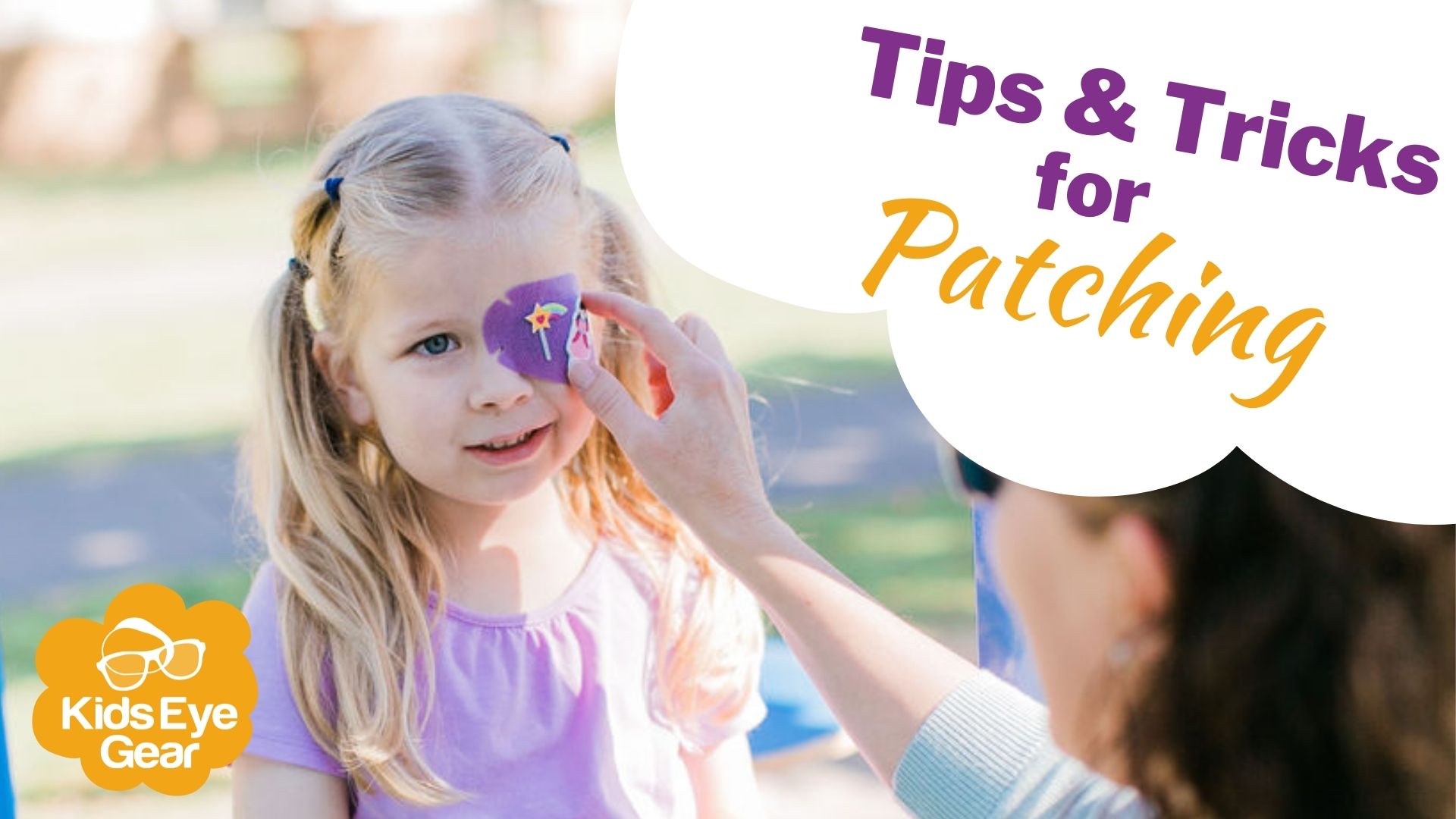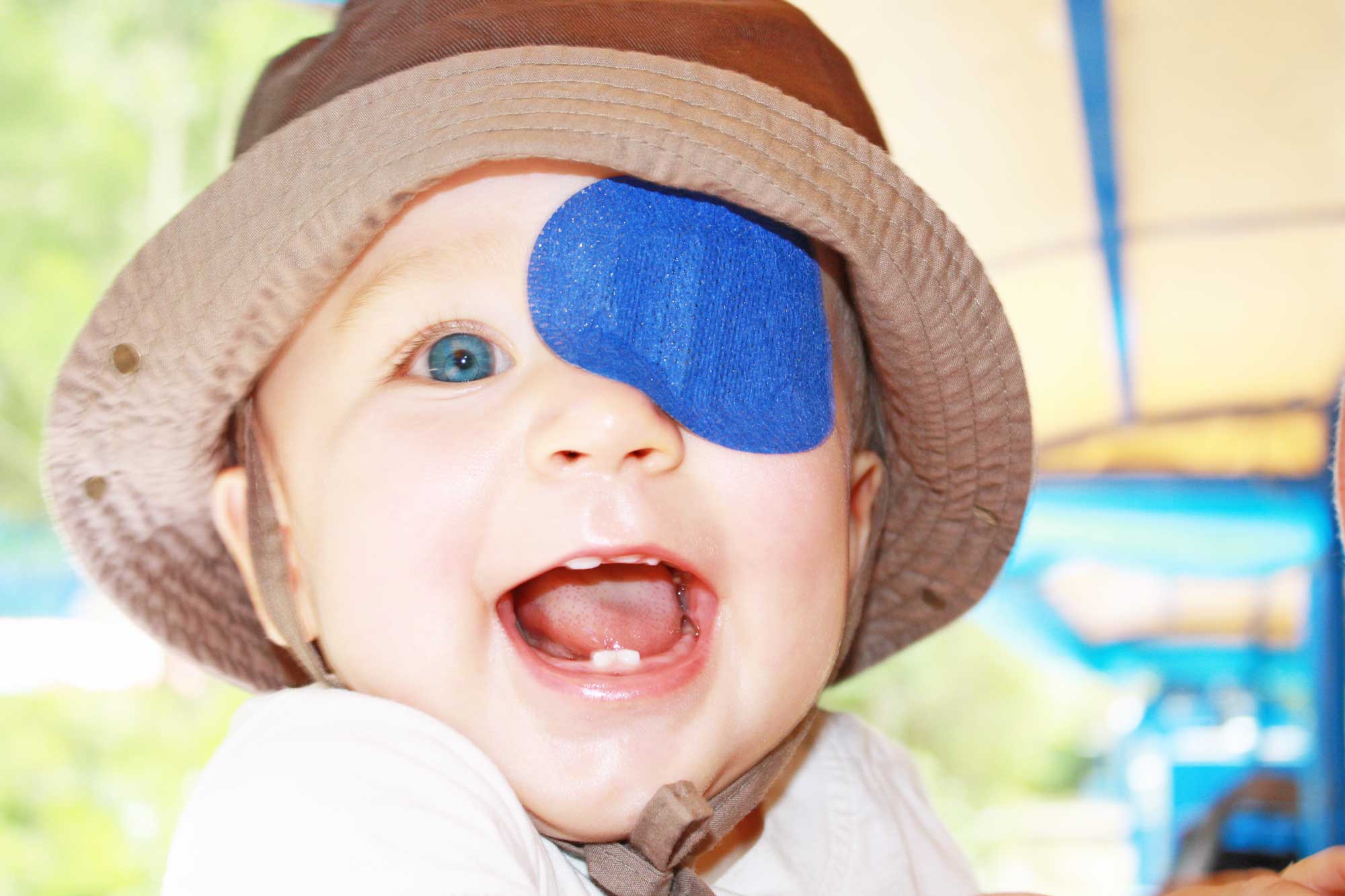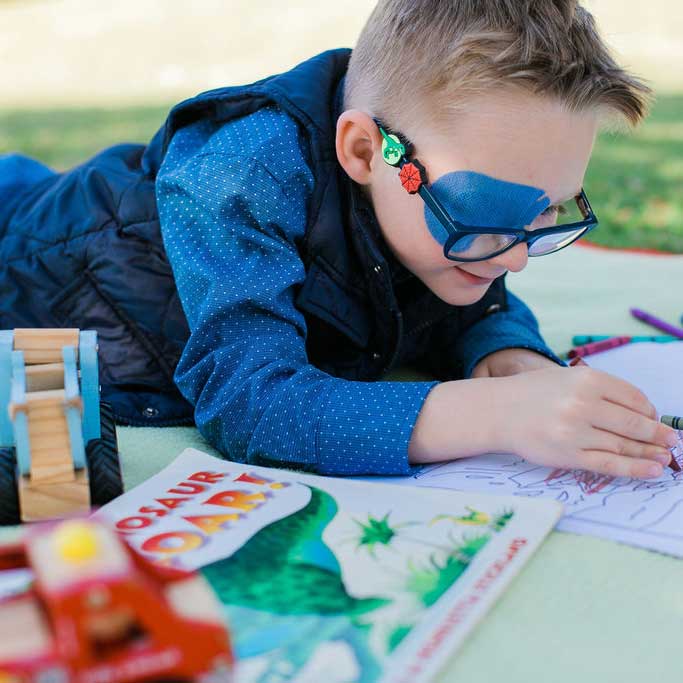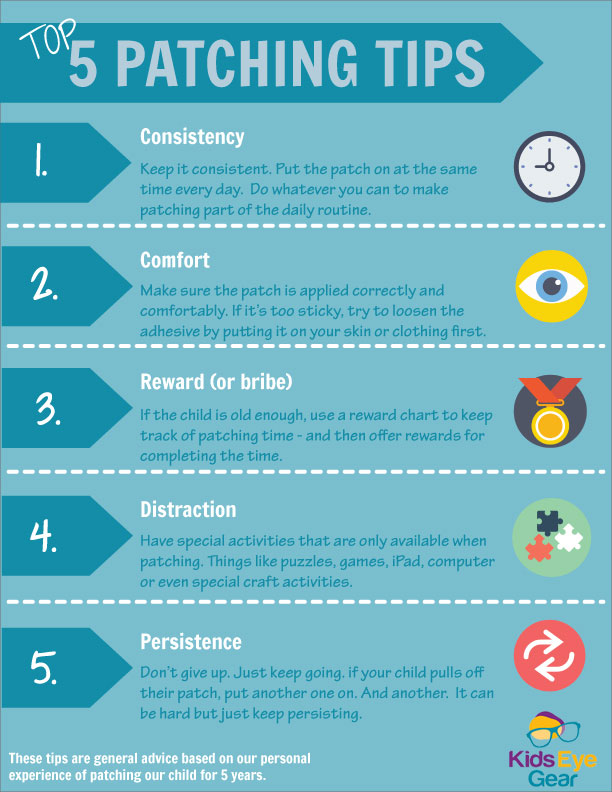Tips and Tricks for Patching
12th Sep 2021

Welcome to the world of eye patching.
Most likely you are here because you have started eye patching your baby or child and you are hitting a few snags, or maybe you just want some inspiration. Here are our top tips for patching success.
Patching a child can be challenging
After patching our son Dane for 5 years, we went through all the highs and lows. There were days he would constantly rip his patch off, going through 11 in one day. There were days when he would be so upset his tears would make his patch slide right off his face. But then there were the days when we had fantastic results from his vision test, proving that all that we were putting him through was totally worth it.
Patching a child can be challenging. It's no fun for anyone to have one of their eyes patched, meaning they quite possibly can't see as well as usual. After patching our son for five years, we learned a few tips and tricks for helping a child patch - hopefully they can help you.

Patching is your new normal
Create and keep this habit by doing it at the same time each day. Kids thrive on consistency so picking a patch start and end time is really going to be your best bet. It may not always be convenient (especially for other people) but picking and sticking to a schedule is going to remind your child that this is nonnegotiable and it is as normal as brushing their teeth each day. Even babies can pick up on routines and schedules. Choose a time that includes leaving the house, this reinforces normality (patching is not a reason to hide away), for you, your child, and everyone else (relatives and friends). Most people find that starting in the morning is best for them, but see what works best for your child. Ignore relatives who ask, “does he have to wear the patch this morning?” Yes, yes he does. Stand your ground, your child’s vision depends on it. If a patch is ripped off, put it back on, over and over again.
So many times, I had family members complain "Oh can't he just not have the patch on for the day so we can take some nice photos?". Sure that would have been lovely but my husband and I were thinking of the big picture. One nice photo now was nothing compared with a lifetime of vision.
Don't get me wrong, we definitely weren't perfect parents with the patching. There were times when he couldn't wear it - if his contact was out/lost/broken, he had conjunctivitis etc. But for the absolute majority of the time, he was patched when he was supposed to be. We tried to time his patching so that if there was something like his own birthday party, he had done his hours before the party started. It didn't always work out but we gave it our best shot.
Looking back it's possible we were a little too vigilant - but then again maybe we weren't. We'll never know whether our almost military style dedication to patching is what contributed to Dane's exceptional visual result, after being given a very slim chance of success. Maybe that was always going to be the outcome? One thing is certain though, we don't regret it for a second.

Dane patching on Christmas Day, a birthday party, at gymnastics and out at the Dayboro Show
How does patching work?
Patching works by covering the strong eye, so that the weaker eye can become stronger - it's often called occlusion therapy. Patching can include patches that stick directly to the child's skin (like a Band-Aid) or fabric patches that go onto a child's glasses - and some people even use makeup pads and medi-tape. But no matter what you use, the whole process of patching can be daunting and pose its own hurdles.

Consistency is Key
One important lesson that we learnt early on to help make patching a bit easier was consistency. When he was a baby and toddler, Dane's patch would go on at 7.30am every single day, regardless of what we had on. A play date with friends? Don't care, the patch is going on. An appointment that had nothing to do with his eye? Yep, the patch went on. Christmas Day? Oh yes, the patch went on. Putting it on at the same time every day (and making sure it went on every day) was vital in communicating to Dane that this was just routine. Just something that was part of his every day life. It became the norm. Given he had to patch for all but 2 hours a day for the first two years, this was pretty much essential.
Make patching as comfortable as possible
Be sure to use a top grade, well-made patch. Do your research, and try a few brands out. Everyone's skin is different so you might need to try different patches to see what's going to work best for your child. Make sure the patch is applied correctly, as this will make a huge difference. Refer to the application guide in your patch pack. If the patch is too loose, it’s an easy target to rip off, and if it’s too sticky, it can be very irritating. Try it on yourself to see how it feels, this will help you when applying it to your child. You can always apply it to your skin or clothing first to make sure it’s not too sticky on your child’s skin. You may go through a few patches until you find the right fit.
Find tips on applying patches here.
Find tips for removing patches here.

Keep patching fun (and distract, distract, distract)!
Let’s be honest, there’s pretty much nothing fun about patching, so here, you need to create your own fun. Distractions are great! Restricting things like the iPad and video games to patching time is a huge win. Patching games (there are heaps online), craft time or helping with baking are all great activities to occupy the hours spent patching. Using fun stickers or gems to decorate the patch each day can be a fun way to keep the patch on and encourage a love of wearing it. It’s great to keep your daily routine normal, this includes leaving the house and having friends over, but keeping a few specific things to patching hours only will really help you out. No patch, no iPad!

Have a reward system for patching
Kids love reward charts. We use them for teeth brushing, for behaviour, for toilet training, for homework, for everything, and now you can use them for patching too. If your child is older, let them choose a reward, and then perhaps after a week of successful patching they can reap their achievements. For smaller babies, when the patch comes off, reward with a special book, a special food, or walk to the park. They might not grasp the chart idea yet, but it won’t take long.
We have a variety of Printable Patching Charts available that will help with compliance. These are great because you can just print them off as you need them.
SHOP PRINTABLE PATCHING CHARTS HERE
Another fun reward system is awarding your patcher with Happy Patchiversary certificates. Most kids love receiving certificates and our free Happy Patchiversary certificate printables can be printed and personalised as you need them.
ACCESS FREE HAPPY PATCHIVERSARY CERTIFICATES HERE

Persistence, perseverance and patience! The whole family is going to need a lot of each. There are going to be hard days and even harder days, oh and some easy days too. You might go through a whole box of patches one day (I really hope you don’t - our record was 11 in one day!), and then only one the next day. Face your hurdles and take each day at a time. Take a breath and just keep patching! Stand your ground, and remember you are doing this to fix your child’s vision, you are your own child’s super hero. Ignore any negative comments and just keep patching.
Don’t forget to be easy on yourselves. This was not in the parenting books. No one can be prepared for this. There’s no such thing as perfectly patching parents, so don’t try to be them. Be gentle on yourself, but stand your ground. So many factors will affect your daily patching, like the weather, relatives and health. Stick to this list as best as possible and you are headed in the right direction for patching success!


